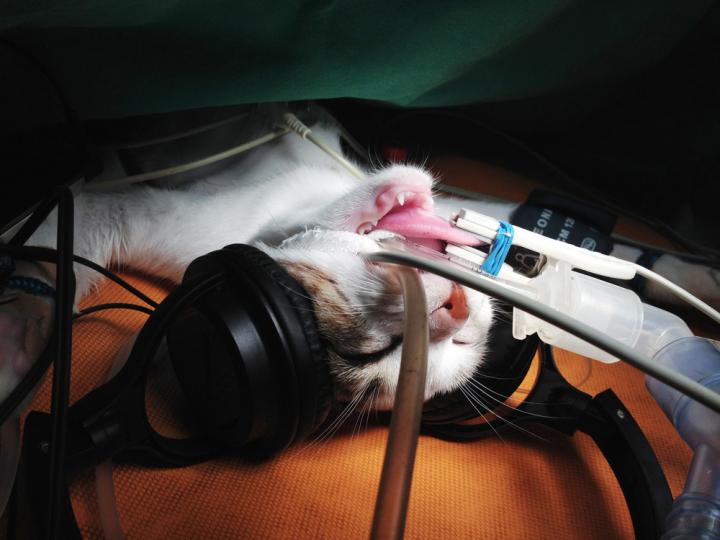According to research published today, music is beneficial for cats in the surgical environment. But not all music is equal in this respect - cats, it seems, benefit most from classical music.
Lead author, Miguel Carreira, explains: 'In the surgical theatres at the faculty where I teach and at the private veterinary medical centre where I spend my time operating, environmental music is always present, and is an important element in promoting a sense of wellbeing in the team, the animals, and their owners. Different music genres affect individuals in different ways. During consultations I have noticed, for example, that most cats like classical music, particularly George Handel compositions, and become more calm, confident and tolerant throughout the clinical evaluation. After reading about the influence of music on physiological parameters in humans, I decided to design a study protocol to investigate whether music could have any physiological effects on my surgical patients.'

A cat from the study is under general anesthesia with headphones. Credit: Margaret Melling, Editor, JFMS
The clinicians studied 12 female pet cats undergoing spaying, and recorded their respiratory rate and pupil diameter at various points to gauge their depth of anaesthesia. The cats, which had been fitted with headphones, were meanwhile exposed to 2 minutes of silence (as a control), followed randomly by 2 minutes each of Barber's 'Adagio for Strings (Opus 11)', Natalie Imbruglia's 'Thorn' and AC/DC's 'Thunderstruck'.
The results showed that the cats were in a more relaxed state (as determined by their lower values for respiratory rate and pupil diameter) under the influence of classical music, with the pop music producing intermediate values. By contrast, the heavy metal music produced the highest values, indicating 'a more stressful situation'. The clinicians conclude that the use of certain music genres in the surgical theatre may allow a decrease in the dose of anaesthetic agent required, in turn reducing the risk of undesirable side effects and thus promoting patient safety.
Dr Carreira and his colleagues plan to continue their studies by looking at the influence of music on other physiological parameters, including cortisol and catecholamines, in dogs as well as cats. In the future, they hope to incorporate more sophisticated techniques, such as functional MRI and electroencephalography, into their investigations.
Citation: Mira F, Costa A, Mendes E, Azevedo P and Carreira LM. Influence of music and its genres on respiratory rate and pupil diameter variations in cats under general anaesthesia: contribution to promoting patient safety. J Feline Med Surg. Epub 30 March 2015. DOI: 10.1177/1098612X15575778